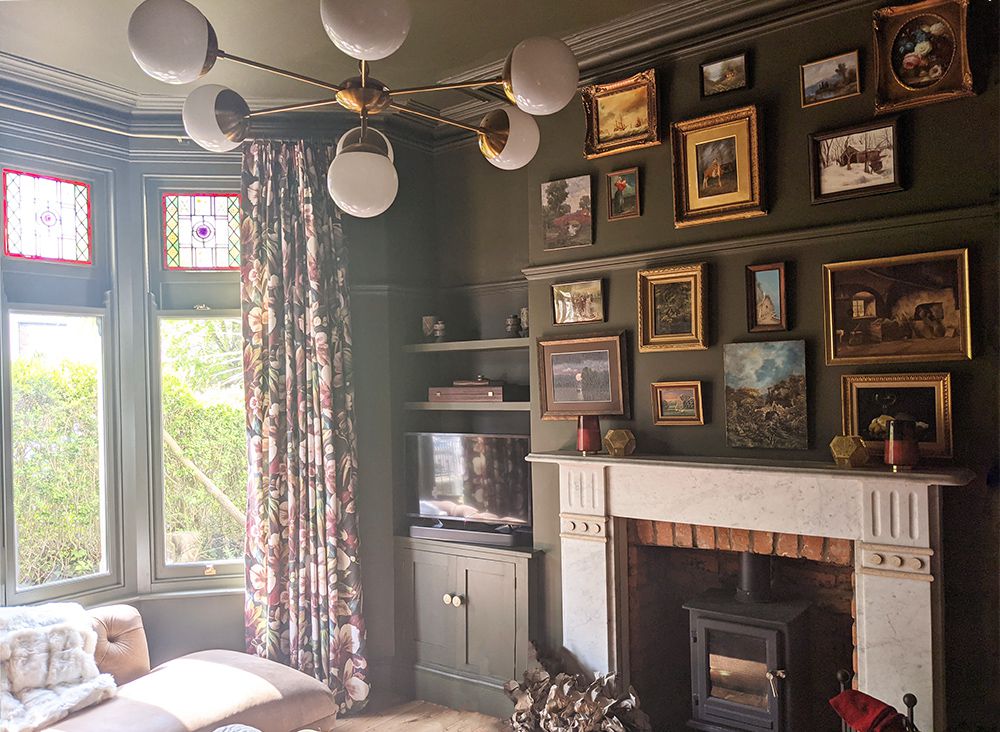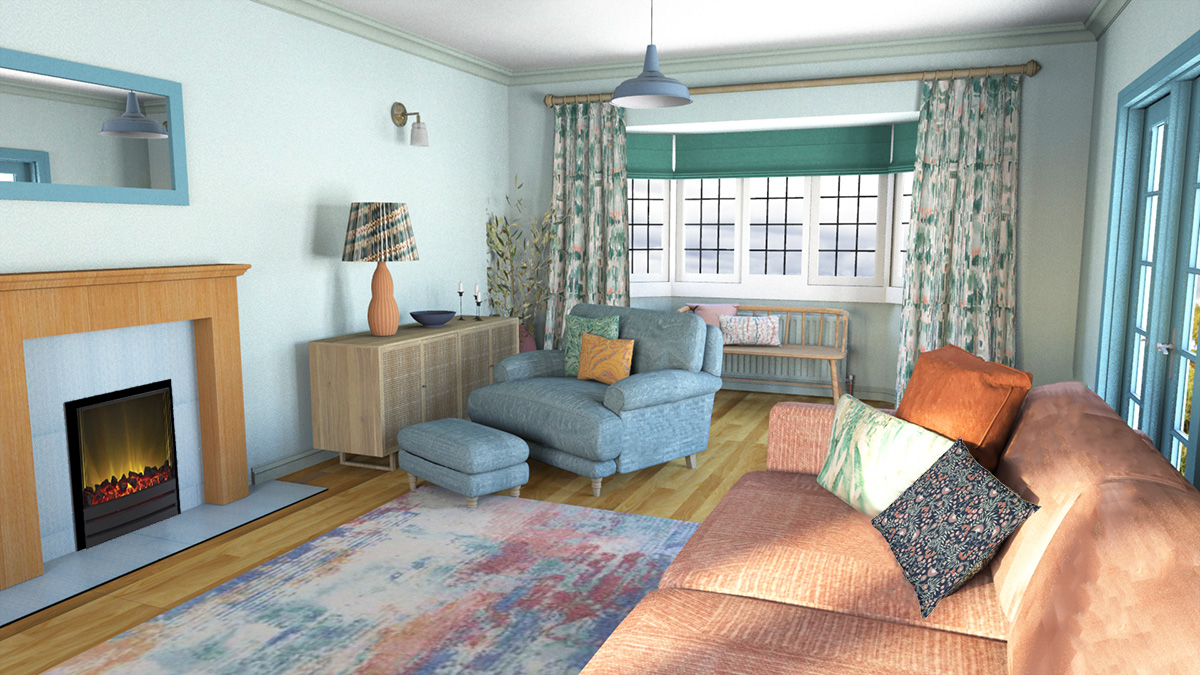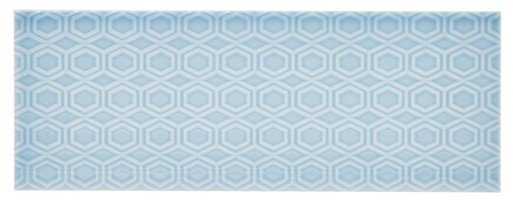When it's time to hire a professional

 |
||
|
With Christmas and New Year around the corner, it is the season for looking back at what we have achieved over the current year, and for plotting our hopes and dreams for the next one. Recently, I have been thinking a lot about my creative background and how I came to be an interior designer, and what I would like to do with those skills next year. It is a cliche, but I was definitely one of those restless children who wanted to change my bedroom around every five minutes, and I was always moving the furniture, trying to come up with the best layout. This is what many interior designers say they did as children, and doing this made them realise that they wanted to be designers. But when I was a child, I didn’t realise where my skills and passions lay, and it took me longer to work out where I was going. Looking back, I was what you could call a creative child - I was hugely interested in buildings, fashion, (always designing and making outfits for my Sindy dolls) and loved art and dancing. I often won competitions for my drawing, dancing and fashion designing. I also loved to write stories, I ‘published’ my own books at home, and would dream up dramatic scenarios which I could act out in my little makeshift theatre behind the sofa. This led me to acting and performing, which I did throughout my childhood, and I often made my poor mum sew costumes for me and my family watch me in endless shows. I went on to study theatre, film and television at university, and whilst I gave up acting pretty soon after starting my course, I specialised in costume design, as I loved interpreting a script and putting my own creative spin on it with my work. I also enjoyed the technical side of things, such as planning lighting and sound design for our productions, and found this to be just as creative as making costumes or sets. Again, I was using my skills to really add to the storytelling and the overall effect of the play. |
||
| So, whilst I’ve been contemplating, I have been thinking lately that I miss working in theatre and television, as I loved the feeling of everyone pulling together to get to the desired end result. I loved that each person and team had their own role to play, and they were vital to the success of the production. I also really appreciated that the director was the creative head of the team - their vision was fascinating to me, and I was in awe of how they kept on top of all the many creative and technical ideas and details in the show. Their job was to allow their ideas to shape the whole production, and to help everyone involved do the best job they could. | ||
|
When I began studying interior design, and later became a designer, I felt that I had taken on another creative discipline, (much like costume design or sound design as I’d done before) and that I was playing my part in the bigger picture again. Whether I was creating costumes which emphasised nuances of the characters in a play, choosing the perfect piece of music for a scene, or selecting a sink for a bathroom, the creative process was familiar and comfortable. It felt very much like working in the theatre - I would take the brief from the client and help them shape it into a defined end result, with those results often driven by the clients themselves. |
||
|
But as I’ve gained experience, I realise that my clients need me to lead them in a much more skilful way. They are looking for me to take the lead and make the decisions which will get them to their desired result. When renovating, it’s easy to get bogged down in the details and find it hard to see the bigger picture, and clients often lose sight of the end goal in the process. It’s my job to keep them and the project on track and keep a firm hold of what they wanted to achieve - to keep their reasons for doing the project top of mind and focus on how it will improve their lives when it's finished. |
||
|
I realise now that In a way, I am taking on the role of the director. It’s my creative vision, based on and melded with the client's needs and desires, but I’m the one who makes it happen. I’ve spoken before about how I see my role as defining the client’s brief, but then I add my own voice to it and shape it into something that the clients could never have dreamed up themselves. |
||
This is even more true when clients ask me to project manage for them. With this service, I bring in and steer all the people needed to make the vision a reality. When I manage a project and coordinate all the tradespeople needed to carry out the work, I am bringing in experts in their fields and I need to respect them and their years of experience. Of course, I will listen to their creative ideas, but I have to make sure that those ideas fit in with the overall vision for the project and don’t take it in another direction. |
||
|
For example, just this week I met with a fireplace installer, and went through the details of what the clients and I needed him to do. Now he is great, and I trust his experience and advice, but he isn’t a designer and can’t see the whole picture of what we are trying to achieve. The house we are working on is a new build, which has been there for around 20 years, so has lowish ceilings and long rooms. The fireplace in the living room is currently too big for the space, and the client and I are trying to balance the proportions of the room by adding a fireplace which is more suitable in scale. |
||
 |
||
|
This is the design for the new fireplace, which the clients wanted to be simple and uncomplicated, but we are adding in some colour and texture with these geometric tiles on the hearth and in the surround. |
||
 |
||
|
And here is the lovely tile we're going to be using around the fire: |
||
 |
||
|
The fireplace installer was going through the options of what he could provide to us, and clearly favoured a Victorian style fireplace. He showed a few of these to me, and told me it would be easier not to tile the surround. Usually, these fireplaces have an additional back panel which is made from stone or slate, which are designed to be an off the shelf option. They are easier to install than a tiled surround and are made to fit the fireplace mantel exactly. It would have been simpler for everyone involved if the client and I had opted for this surround, and we did listen to what the installer was telling us. But after discussing it, we decided to stick with the original plan of using tiles. The client looked to me for guidance, and whilst I don’t want to make anyone’s job more difficult, I felt it was important to give her what she had asked for. She had loved the tiles from the moment I showed them to her, and I felt they added an important dimension to the overall design, and that without them the simple oak mantel could look quite flat or bland. In another living room project I’m working on, we are currently in the process of getting the bespoke window dressings made and installed. When I put the whole design together, I added some details like wall lights which are made from straight rods of glass, and chose ribbed ball finials for the curtain poles to echo this shape. Here’s the wall light and the ribbed ball finials I chose: |
||
When I was at the client’s home with my curtain fitter, he was measuring up and was concerned that the limited space between the window and the wall meant that the finials we wanted might not leave enough space for the curtains to be drawn back from the window. We discussed the issue with the client, and talked about the possibility of changing the finials to those with a smaller shape. The client was very easy going and open to suggestions, but I felt that we should stick with the original finals. I explained to the fitter and the client the reason I had chosen those particular finials, and felt that changing them would compromise the design. I wasn’t being a diva - all of these little details add up to a multi layered and fully rounded design - something the client had wanted when she decided to bring in a designer for the project. If you change or take too many of these details away, the room can end up looking and feeling unfinished, or just not as amazing as it could have been. What a shame it would be to go through the whole design process, and then the upheaval of a renovation, to look at your home and think it is merely okay. I don’t think any of my clients want that, and I certainly don’t want that for them. By the way, we did lots of measurements and worked out a way to make the ribbed ball finials work, so the design is intact! |
||
| Part of the role of a project manager is to consider and overcome practical challenges, sometimes making necessary changes to my designs, whilst keeping an eye on the end result. I need to work with the trades involved, but also to advocate for my clients. The clients I work with often struggle with looking at all the elements of a room together, and find it easier to focus on one thing at a time, and the same can be true of the tradespeople working in their homes. They are quite rightly focused on the practicalities of what they need to do, whether that be the paintwork or the wiring, but my job is to always have that end goal and overall design in mind, keeping everyone working towards it until it’s completed. | ||
|
So, in a way, I am taking on the role of a theatre director, and I am relishing it. Whilst I’m happy for some of my clients to have a design from me and implement it themselves, the results are so much better when I am there to guide everyone. Clients are busy with their lives, and often don’t have the time or energy to focus on the project over many months until is it complete. It is my job to do this everyday, and I can guide everyone gently along the way, making sure it happens. Which brings me back to my focus for next year. I’d love to help more clients realise their designs, making sure that they are carried out safely and successfully, and staying as true to the original vision as possible. I may not be Wes Anderson, but I am just as focused as the filmmaker and designer (and am certainly inspired by his work). |

Welcome to the design blog, where you'll see posts about anything from the projects we are working on, to the latest fabric and wallpaper collections, and all things interiors related. We love colour, pattern, architecture and old buildings, and we love to share our finds with you.
Happy reading!